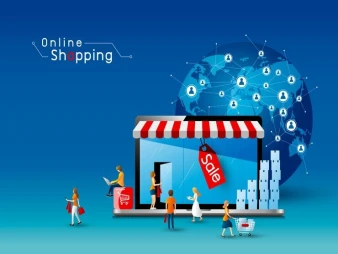Free support 24/7
Free support 24/7

Product pricing is the process of determining the price at which a product will be sold to customers. Choosing the right method to price your products is crucial to the success of your business. Here is an overview of the most important product pricing methods:
1. Cost-based pricing:
This method is based on calculating the fixed and variable costs of producing the product.
A profit margin can be added to the cost to ensure profits.
Suitable for industries that require accurate production costing and precise knowledge of costs.
2. Pricing based on added value:
It focuses on providing additional value to customers by offering distinctive products or services.
It allows prices to be set based on the benefits received by customers.
It can be used in industries that provide high quality products or services.
3. Market-based pricing:
It requires studying the market and analyzing competitors' prices.
Prices can be adjusted based on market supply and demand.
It helps determine how competitive your products are.
4. Customer based pricing:
It allows pricing to be customized for specific customers based on their needs and value of the product.
Special offers or discounts may be offered to distinguished customers.
5. Assembly and Package Pricing:
It involves offering multiple products as a single package at a discounted price compared to purchasing each product separately.
It attracts customers looking for greater value.
6. Time-Based Pricing:
Allows prices to change based on time, such as seasonal sales or limited-time offers.
7. Demo pricing:
It involves offering the initial offer at a low price or for free to attract new customers.
Prices can be determined based on the initial customer experience.
8. Pricing for discounts and special offers:
It can be used to increase sales during times of poor demand for products.
Encourages customers to buy quickly.
9. Pricing of complementary services:
Additional services can be offered at additional cost to increase revenue.
Services such as technical support or maintenance may be provided at an additional cost.
10. Package pricing: - It allows multiple products to be offered in packages that represent a group value. - Packages can be customized for specific needs or age groups.
11. Relationship pricing: - This approach depends on building strong relationships with customers over time. - It can include offering low prices or discounts to regular and loyal customers. - Contributes to customer retention and increased return rate.
12. Pricing of main and additional products: - This method allows offering main products at competitive prices to attract customers. -More additional products or services can be offered at higher prices. - Encourages increased customer revenues by expanding the product range.
13. Liquidation and stock disposal pricing: - It is used to sell products that have been in stock for a long time or that are on sale. - Customers can be motivated to buy at low prices to get rid of unsold inventory.
14. Customized Product Pricing: - Allows the provision of products tailored to individual customer wants and needs. -Involves setting prices based on materials, labor, and additional costs related to customization.
15. Pricing for monthly subscriptions and services: - It is based on providing ongoing services or monthly subscriptions to customers. - It helps in achieving continuous income and financial stability.
16. Pricing new products: - When launching a new product, a special pricing strategy can be used to attract customers and encourage them to try. - The importance of providing distinctive value to customers for the price must be taken into account.
17. Pricing of flagship products and derivatives: - A flagship product can be offered at a low price while derivatives or advanced versions are offered at higher prices. - This approach allows customers to choose the right level of product according to their needs and budgets.
18. Pricing strategic products: - includes setting prices for strategic products based on their role in the overall business strategy. - Some products may be lower in price to attract customers, while others may be more profitable.
19. Pricing products for international markets: - Requires extensive study of international markets and estimation of costs related to exporting. - Economic, cultural and political factors in international markets must be taken into account.
20. Product Pricing for Retail and Wholesale: - Different prices may be offered to retail and wholesale customers based on purchase quantities and business relationships. - It helps in achieving a balance between meeting different customer needs and achieving profits.
21. Omni-channel product pricing: - It involves directing the price of a product based on the different channels you use to reach customers. - Differences in price expectations for each channel must be taken into account.
22. Pricing products according to technology: - Technology products may witness rapid developments in the market. Therefore, the technological age of the product must be taken into account and prices adjusted accordingly. The pricing strategy here includes offering updates or new versions at different prices.
23. Pricing products based on reputation and brand: - Brand and reputation can play a big role in determining the value of a product. -Higher prices can be justified for products that are known for their quality, design or unique features.
24. Pricing products based on environmental and social trends: - Environmental and social trends may require additional costs for sustainable and socially responsible products. Prices can be set that reflect the business's commitment to social and environmental responsibility.
25. Pricing products based on research and development: - It can include offering higher prices for products that have been based on costly research and development. Prices should encourage funding for future research projects.
26. Pricing products based on distribution and logistics: - Distribution and logistics costs can affect the pricing of the product. - Shipping, storage, and distribution costs of products must be taken into account when setting prices.
27. Pricing products based on taxes and regulations: - Taxes and regulations must be taken into account
Local and international when setting prices. - There may be tax or regulatory requirements that affect the pricing structure.
28. Pricing products based on internal supply and demand: - This strategy depends on the company’s internal factors such as fixed costs and target profit margin. - Must estimate how prices affect customers and internal sales.
29. Pricing products based on future estimation: - Changes in raw material costs, technology, or labor costs can be predicted and included in product pricing.
30. Performance Evaluation and Adaptation: - Companies should regularly monitor and evaluate the performance of the pricing strategy. - Prices can be adjusted and respond to changes in the market and customer needs.
31. Pricing Products Based on Customer Rating:- This approach is based on customer ratings and feedback about the product. - Discounts or improvements may be offered based on customer reviews.
32. Product pricing based on partnerships and collaborations: - Special prices can be provided to business partners or customers who work closely with the company. - Encouraging partnerships and collaboration can have a positive impact on business.
33. Pricing products based on marketing policies: - Marketing strategy can be included in setting prices, such as offering special promotions or aggressive product pricing. - These policies must be consistent with the brand strategy.
34. Pricing products based on life expectancy: - Pricing strategy depends on the life span of the product in the market. It is possible to offer competitive prices for new products and then raise them over time or offer discounts for products that have become old.
35. Pricing products based on vision and goals: - The pricing strategy must be consistent with the long- and short-term vision and goals of the company. Prices can be set based on achieving certain goals, such as increasing market share or achieving maximum profit.
36. Pricing products based on variety: - A variety of versions and models can be provided at different prices to meet diverse customer needs. - Prices can be determined based on certain features and details of different versions.
37. Evaluate prices periodically: - The company should review the pricing strategy regularly to verify that it still meets objectives and is consistent with market changes. - May require improvements and adjustments to pricing.
38. Pricing products based on economic analysis: - Price analysis includes expected costs and benefits to the company. Tools such as Cost-Benefit Analysis can be used to make informed pricing decisions.
39. Pricing products based on creativity and innovation: - It can include offering new products or innovative technologies at competitive prices to attract customers. - Encouraging innovation can make the company outperform competitors.
40. Pricing products based on ability to pay: - Various payment options can be offered such as installments or waiver of delivery fees in exchange for immediate payment. - Helps expand the appeal of products to a wider group of customers.
41. Pricing products based on ethics and social responsibility: - This includes offering prices that encourage sustainable practices and enhance the company’s social responsibility. - The company is committed to achieving profit in ways that are consistent with ethical principles and societal values.
42. Pricing of products based on industrial trends: - There can be industry trends that affect the pricing of products, such as a decrease or increase in prices based on technology or raw materials. -Success requires analyzing industry trends and adapting prices based on changes.
43. Pricing products based on investment in marketing: - More marketing and advertising resources can be directed to strategic products and prices set accordingly. - Marketing strategy enhances customer awareness of products and provides greater value.
44. Pricing products based on data and analysis: - Data analytics and statistics can be used to determine prices based on details such as customer behavior and historical sales. - Prices can be adapted based on data and changes in the market accurately.
45. Pricing products based on large customers: - Special prices can be offered to large customers or buyers in large quantities. - This contributes to building lasting relationships with key customers and achieving sustainable sales.
46. Pricing products based on product reviews and ratings: - Product pricing can be guided based on customer reviews and ratings. - It is possible to offer discounts or rewards to customers who participate in providing product reviews.
47. Pricing products based on safety and quality: - Higher prices can be justified for products that have high safety standards or superior quality. - This strategy ensures customer continuity and builds a good reputation for the company.
48. Pricing products based on laws and regulations: - The company must adhere to local and international laws and regulations when setting prices. - Laws can affect pricing structure, labeling, packaging and marketing requirements.
49. Pricing products based on honesty and transparency: - The pricing strategy must be characterized by transparency and provide sufficient information to customers. - Honesty contributes to building trust and loyalty to customers.
50. Evaluating customers and meeting their needs: - The company must be sensitive to changes in customer needs and trends in pricing. - Through continuous interaction with customers and meeting their needs, the pricing strategy can be improved and relationships with them strengthened.
In conclusion: The process of pricing products remains important and requires strategic thinking and careful analysis. Pricing strategy should be linked to the company's objectives and the external and internal factors that affect the business. By taking advantage of these strategies and methods mentioned and with MutabWith regular evaluation, a company can achieve success and achieve sustainable profits in the market.

Flash sales are not just a temporary marketing tool. They are a smart tool to quickly drive sales and increase engagement in your store

تعرف على الطريقة الذكية اللي تخليك تستفيد من تجارب عملاءك السابقين في تسويق منتجاتك الجديدة وزيادة المبيعات
You can create your store easily